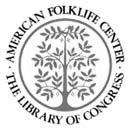| |
|||
|
|
The American Folklife Center at the Library of Congress October 14, 2009 Event Flyer Hear, O Israel:
|
|
While all aspects of Yiddish culture, including literature, theater, film, recording, and journalism, existed in robust and diverse forms wherever Ashkenazi Jews lived, it was in America that these outlets of Yiddish self-expression found their greatest and most creative realization on the radio. From 1925 until 1955, on some 180 stations from coast to coast, radio programs reached into the homes and workplaces of Yiddish-speaking listeners. These programs reflected and amplified the diverse social and cultural infrastructure which characterized this immigrant community during the first half of the 20th century. By exploring this amazingly broad category of Yiddish radio shows, we encounter a vibrant and vital Jewish-American popular culture at its creative apex, on the eve of its terrible, nearly fatal, devastation.
As we might expect, Yiddish programs maintained a powerful presence in American cities like New York, Philadelphia, Boston and Chicago — urban centers whose strong Jewish presence is well documented. However, the discovery of Yiddish programs in places like Memphis, Dallas, Salt Lake City and Sioux City, Iowa exposes a far deeper active regional presence of Yiddish-speaking Jews than was previously imagined. This provides an unprecedented perspective on the full trappings of regional Jewish American culture.
These programs reflected the dynamic state of the Yiddish culture at its apex. Theater from both the "legitimate" and "variety" stages was broadcast not only from the stations' studios, but also live from the stage of the community theaters themselves, giving listeners today an unparalleled ability to eavesdrop on an otherwise undocumented moment in cultural transmission. The same holds true for older folk culture, in the form of traditional cantorial prayers, folksongs, and old-time klezmer ensembles, which were a ubiquitous staple on many local stations. Secular culture in the form of programming on labor and unions found a healthy outlet on many stations, including New York's WEVD (named for Socialist leader Eugene V. Debs) and Chicago's WCFL ("Chicago Federation of Labor").Yet alongside these decidedly secular programs, the very same stations aired traditional and religious material, such as rabbinical advice and mediation programs, commentary on and study of the Torah, and even synagogue services for those unable to attend in person.
The dynamic give-and-take between the dominant American society and the often socially buffeted world of émigré Yiddish-speaking Jews who created and listened to Yiddish programs, allows us to understand which aspects of received cultural literacy the community willfully retained and which parts were willingly jettisoned as part of its process of American acculturation. As with newspapers, most of these radio programs were sustained by sponsors and through this omnipresent advertising we have a bird’s-eye view of every aspect of the lives of mid-century Jewish consumers, including what they wore, what and where they ate, where they vacationed, and what theater and movies they attended.
Yiddish radio allows a new and unique insight into an untold chapter of American broadcast history. The wealth and sheer breadth of these Yiddish programs, among the thousands of other ethnic, religious, and foreign-language programs which also aired on American radio, reveals that America's model of administering the airwaves as a hybrid of government and private interests created far more equitable, representative and broad-based minority access to the airwaves than in any other country in the world.
The rare and fragile one-of-a-kind discs which document this exuberant period of the invention of Yiddish popular culture were never intended for long term storage or re-broadcasting. They were gathered over a period of twenty years, from individuals, archives, collectors and even dumpsters. The collection comprises the single largest amassing of such programs in the world, and formed the basis for the 2002 Peabody-award-winning National Public Radio documentary program, "The Yiddish Radio Project." The estimated 13 million listeners who tuned in over the course of the series' multi-week run comprised a larger audience than all those who listened to the original Yiddish programs over the course of half a century.
Now this priceless collection has been acquired by the American Folklife Center at the Library of Congress, where future generations will be able to study and enjoy it. Please join us for an introduction to this fascinating collection.
Henry Sapoznik
University of Wisconsin

The American Folklife Center was created by Congress in 1976 and placed at the Library of Congress to "preserve and present American Folklife" through programs of research, documentation, archival preservation, reference service, live performance, exhibition, public programs, and training. The Center includes the American Folklife Center Archive of folk culture, which was established in 1928 and is now one of the largest collections of ethnographic material from the United States and around the world. Please visit our web site.
| ||||

